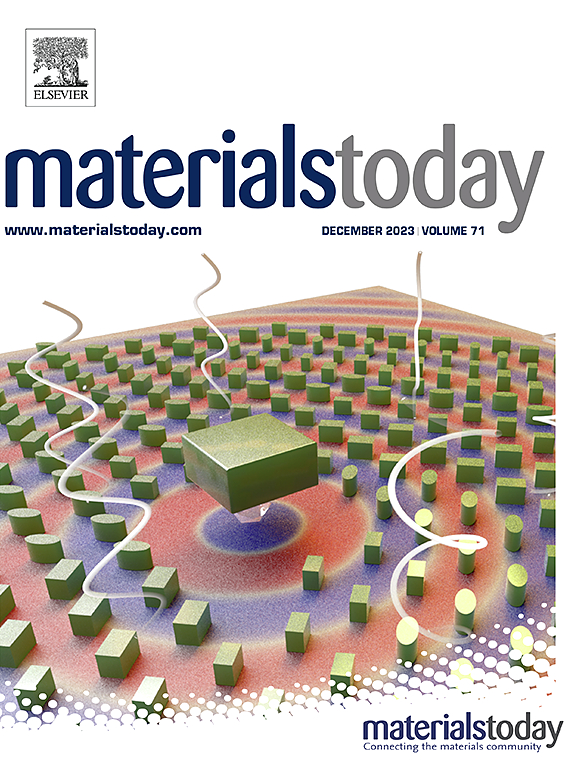X-ray computed laminography: A brief review of mechanisms, reconstruction, applications and perspectives
IF 21.1
1区 材料科学
Q1 MATERIALS SCIENCE, MULTIDISCIPLINARY
引用次数: 0
Abstract
X-ray computed tomography (CT) has the capacity to reveal the internal details of objects in three-dimensions, non-destructively. Since the 1980s, X-ray CT has been accepted as a well-established tool for a wide range of scientific and engineering research endeavours. The sample is rotated about an axis perpendicular to the incident X-ray beam during CT acquisition. The spatial resolution of CT scans may be compromised for large, flat (high-aspect-ratio) samples due to constraints imposed by the geometrical setting. The recent development of X-ray computed laminography (CL) offers a great opportunity to overcome several limitations by using an angled axis of rotation, which could complement CT characterisation. Like X-ray CT, CL is also capable of acquiring 3D image datasets for the extraction of volumetric parameters, such as phase fractions and damage levels. Herein, we review the research on X-ray CL over the past three decades and the current state of the field, including its advantages and disadvantages, characteristics, methods and setup, data reconstruction and computational software, and applications. Finally, the outlook for future research opportunities and challenges is briefly discussed. The preliminary attempts to implement CL for electrochemical devices are presented with a focus on research pertaining to pilot-scale solid-state pouch batteries.
x射线计算机层析成像:简要回顾其机制、重建、应用和前景
x射线计算机断层扫描(CT)具有三维无损显示物体内部细节的能力。自20世纪80年代以来,x射线CT已被广泛接受为科学和工程研究的一种完善的工具。在CT采集期间,样品绕垂直于入射x射线束的轴旋转。由于几何设置的限制,CT扫描的空间分辨率可能会受到大的、平坦的(高纵横比)样品的损害。最近发展的x射线计算机层析成像(CL)提供了一个很好的机会,通过使用角度旋转轴来克服一些限制,可以补充CT表征。与x射线CT一样,CL也能够获取3D图像数据集,用于提取体积参数,如相分数和损伤水平。本文综述了近三十年来x射线CL的研究现状,包括其优缺点、特点、方法和设置、数据重建和计算软件以及应用。最后,对未来的研究机遇和挑战进行了展望。在电化学装置中实施CL的初步尝试中,重点介绍了与中试规模固态袋式电池有关的研究。
本文章由计算机程序翻译,如有差异,请以英文原文为准。
求助全文
约1分钟内获得全文
求助全文
来源期刊

Materials Today
工程技术-材料科学:综合
CiteScore
36.30
自引率
1.20%
发文量
237
审稿时长
23 days
期刊介绍:
Materials Today is the leading journal in the Materials Today family, focusing on the latest and most impactful work in the materials science community. With a reputation for excellence in news and reviews, the journal has now expanded its coverage to include original research and aims to be at the forefront of the field.
We welcome comprehensive articles, short communications, and review articles from established leaders in the rapidly evolving fields of materials science and related disciplines. We strive to provide authors with rigorous peer review, fast publication, and maximum exposure for their work. While we only accept the most significant manuscripts, our speedy evaluation process ensures that there are no unnecessary publication delays.
 求助内容:
求助内容: 应助结果提醒方式:
应助结果提醒方式:


